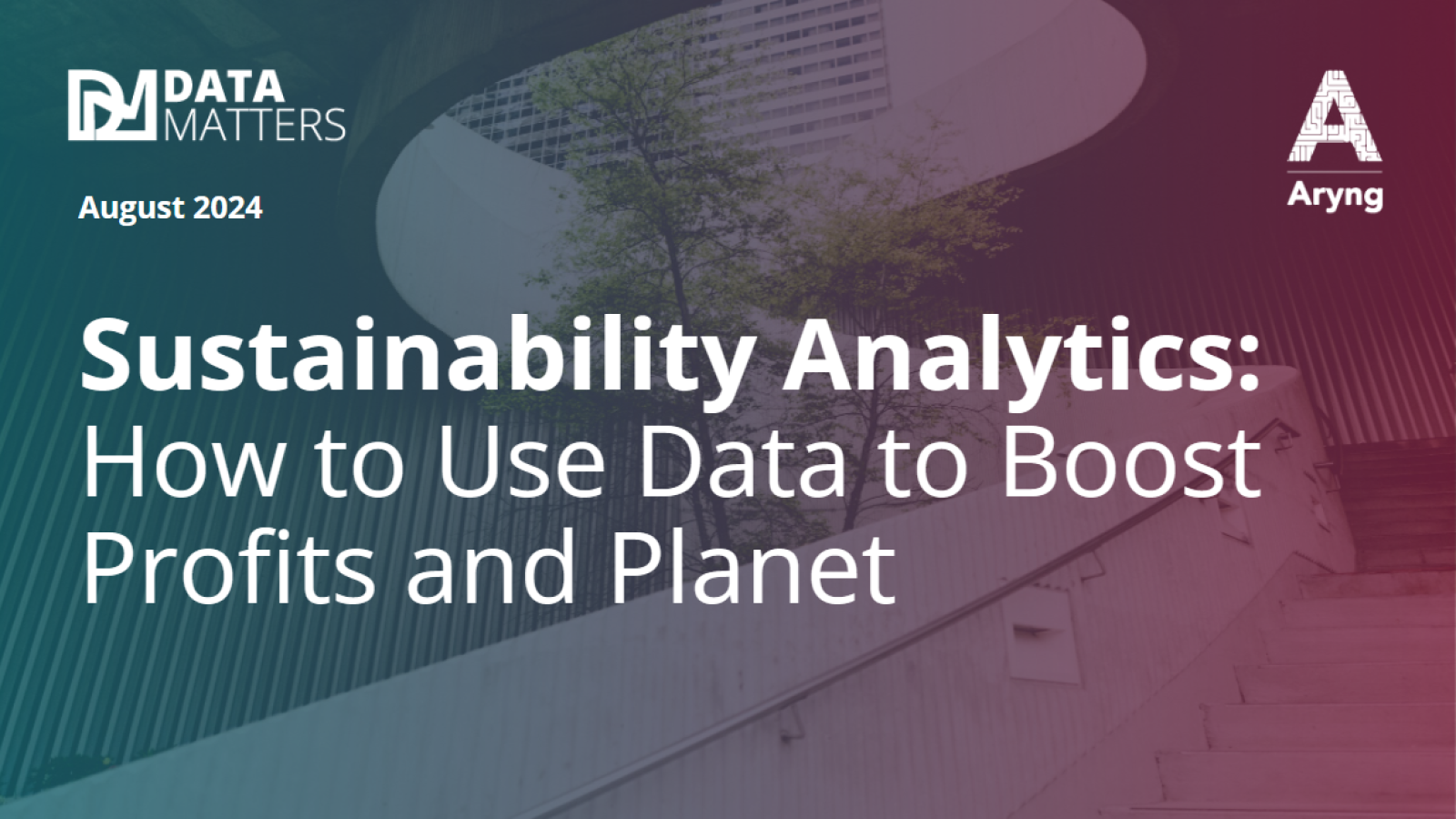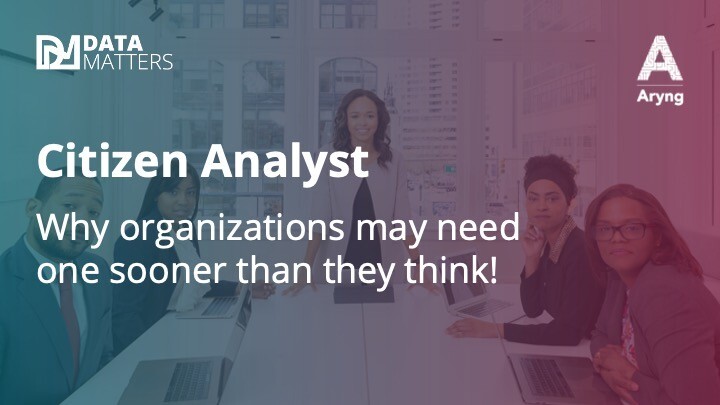When a transportation service uses data analytics to optimize its delivery routes and save fuel costs, it also saves the environment from a tremendous amount of pollution. In today’s world, such an improvement in business operations exemplifies the ultimate win-win. Sustainability analytics doesn’t have to mean sacrificing profits for a greener world. Instead, it can be key to improving both profits and planet.
Sustainability analytics can be easily used to simultaneously improve both kinds of green – increased profits and a healthier planet. Any business’s sustainability efforts may start with simple light-bulb swaps, but data analytics can help them unlock a deeper understanding of their environmental footprint – from uncovering the hidden water usage embedded in a seemingly innocuous supply chain to identifying product design opportunities for increased circularity. When done correctly, there is no need for greenwashing. Instead, real opportunities for change, and profitable change at that, are always ready to be discovered.
Additionally, analytics can also be a powerful forecasting tool. Predicting future resource scarcity, for example, allows businesses to optimize procurement strategies and mitigate potential risks.
How Analytics Can Turn Sustainability Goals into Profits
Like in our light-bulb example, using sustainability analytics to implement data-driven efficiency upgrades can slash energy consumption, leading to lower operational costs. Similarly, analyzing supply chain data can reveal inefficiencies in transportation and warehousing, leading to cost savings and a smaller carbon footprint.
But the benefits go beyond cost reduction. By analyzing customer preferences and market trends, companies can develop eco-friendly products and services that resonate with this growing segment. A robust sustainability analytics strategy can become a powerful marketing tool, attracting loyal customers and boosting brand value.
Set up the 3 Pillars to Boost Both Profits and Sustainability
While we don’t have a simple step-by-step framework, these are the 3 pillars that will build the foundation of a data-driven sustainability analytics strategy:
1. Data
Smart sustainability analytics hinges on the quality of your data. Start with collecting information from all your data sources in one place, like energy bills, production records, waste management reports, and customer feedback surveys.
Then look beyond your company walls at industry benchmarks, competitors’ sustainability reports, NGO research, and even government insights. The important thing is to ensure that all your data is accurate, complete, and standardized.
2. Analytics
Hire analysts who ask questions. Good analysts ask more questions than they answer to ensure their insights are free from errors, assumptions, and biases. Enable them with the business intelligence and data visualization tools they need to translate complex datasets into insightful dashboards.
Encourage deep dives to identify trends and uncover connections between profitability and sustainability areas. Some simple areas to start with include energy, waste, water, vendors, logistics/fuel, product circularity and brand reputation. You can also look into the profitability and efficiency of using cloud-based solutions versus on-premise servers, and facilitating remote work versus expensive office spaces.
3. Culture
Culture is important in sustainability analytics as everyone in the company must be empowered to be data-driven. Data and tools are only as good as the people who can investigate and take action on them. This includes data literacy training and integration of sustainability goals into the very fabric of your business strategies. Begin with the mindset that smart data analytics can lead to both environmental and financial wins.
Use Sustainability Analytics to Unlock Both Profits and Benefits for the Planet
By embracing data-driven analytics, businesses can build a resilient and future-proof model that thrives in harmony with the planet, and delivers superior returns for stakeholders. As data collection and sustainability analysis become increasingly sophisticated, the possibilities for positive environmental and financial impact are limitless. The future of business is not just sustainable, it’s data-driven. Take a look at these examples across industries:
- Manufacturing: Predictive Maintenance for Energy Savings: A factory utilizes sensor data from machines to predict potential failures. Proactive maintenance prevents unnecessary downtime and the associated energy consumption for running idle machinery. This also minimizes the need for replacement parts, reducing resource use and waste generation.
- Agriculture: Precision Farming with Data-Driven Insights: A farm analyzes soil data, weather patterns, and crop growth metrics to optimize fertilizer and water usage. This reduces water waste and minimizes the environmental impact of agricultural runoff. Additionally, these data-driven insights help farmers maximize crop yields, leading to increased profits and reduced food waste.
- Logistics: Data-Driven Route Optimization for Deliveries: A logistics company analyzes traffic patterns and delivery locations to optimize delivery routes. This minimizes the distance traveled by delivery vehicles, reducing fuel consumption and emissions. Additionally, data helps consolidate deliveries and identify opportunities for backhauling (using return trips productively), further lowering environmental impact.
- E-commerce: Personalized Packaging and Reduced Waste: An online retailer using customer data and purchase history to personalize packaging sizes. This minimizes cardboard and plastic needed per shipment, reducing waste (good for the environment) and shipping costs (good for profits)! Additionally, it improves customer satisfaction by eliminating the need to discard unnecessary packaging.
- Technology: Predictive Maintenance for Hardware: Tech companies can leverage sensor data from devices to predict potential hardware failures. Proactive maintenance prevents unnecessary replacements and associated e-waste generation. Additionally, it reduces energy consumption associated with devices running inefficiently due to impending failure.
- Software as a Service: Embracing Remote Work: After analyzing employee location, office space utilization, and remote work studies, a software company launched a pilot program to go all remote. This led to easier hiring of a wider talent pool, reduced office space costs, maintained productivity, and a decrease in emissions from the daily commute of hundreds of workers.
Conclusion
To many businesses, sustainability in business meant eco-friendly product makeovers or marketing tactics that overstated environmental benefits. However, strong data and sustainability analytics can enable businesses to make decisions that genuinely and seamlessly integrate both profits and planet. Sustainability does not have to be a separate initiative; but it can easily be woven into the fabric of profitable business strategies, driven by good, strong data insights.


